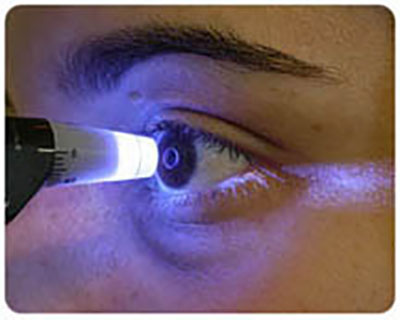
Tonometry

The measurement of intraocular pressure is called tonometry and is done with special instruments, the tonometers.
The most widely used tonometer, which gives accurate measurements, is the Goldman tonometer (flattening tonometer). The normal value of intraocular pressure varies statistically between 10 and 21 mmHg with a mean value of 16 ± 2 mmHg.
Tonometry is the ophthalmological examination, with which the ophthalmologist can determine the intraocular pressure, that is, the pressure exerted by the liquid, which is present inside the eye (aqueous liquid).
Risks of increased intraocular pressure.
Intraocular hypertension is the most important risk factor for the occurrence of glaucoma and blindness. Intraocular pressure can increase due to various causes, such as old age, anatomical reasons, inflammation of the eye, hereditary factors or as a side effect from the use of certain medications.
